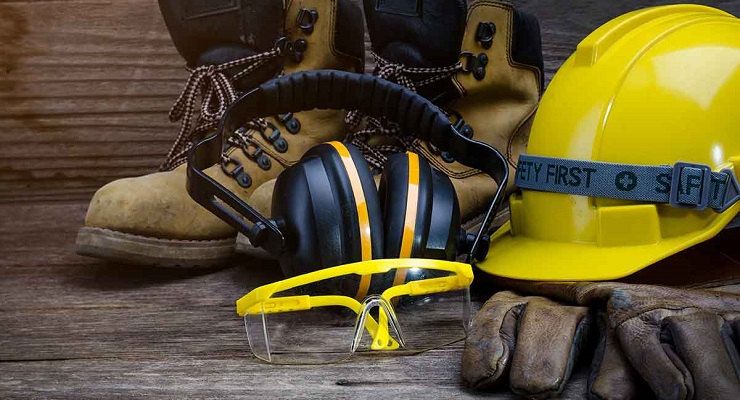Personal Protective Equipment (PPE)?
While personal protective equipment is the last line of defense against hazards on the job following engineering and administrative controls, PPE is still essential to everyday safety for workers. It is important for employees to understand site-specific reasons why PPE is required on the job site as well as how to properly don protective gear so that it can protect workers from injury.

Personal Protective Equipment (PPE)? en
03/02/2023
It is important for everyone on the job site to understand the importance of PPE, how to check for damage and ensure proper fit.
While personal protective equipment is the last line of defense against hazards on the job following engineering and administrative controls, PPE is still essential to everyday safety for workers. It is important for employees to understand site-specific reasons why PPE is required on the job site as well as how to properly don protective gear so that it can protect workers from injury.
Types of PPE
There are four types of PPE that workers should be familiar with. Sometimes there is no need to educate and train workers on certain personal protective gear if certain hazards are not present, but you should do your best to ensure the employees are as educated as possible about the types of PPE they may need in certain scenarios.
Eye and Face Protection. PPE to protect the face and eyes includes safety googles or glasses, and various other face shields. This kind of PPE should be used when employees are tasked with items such as welding or spraying chemicals.
Respiratory Protection. Respiratory protection is PPE that includes full-face respirators, N95s, self-breathing apparatus and more. This kind of PPE is designed to stop employees from exposure to harmful chemicals, gasses, viruses and materials that are often inhaled during work.
Skin and Body Protection. This is the largest category of PPE and often includes personal protective gear that protects the head, body, hands, feet and employee from falling from height. The best examples of this kind of PPE are hard hats, high visibility vests, cut- or puncture-resistant gloves, knee pads, safety boots and safety harnesses.
Hearing Protection. The last type of PPE is Hearing Protection. This often includes gear such as earmuffs and earplugs. This PPE is designed to reduce a worker’s exposure to loud noise that could lead to permanent hearing loss.
Important Guidelines There are five guidelines all employees should keep in mind when they’ve been assigned duties that require personal protective equipment.
Last Line of Defense. PPE should not be the first thing an employee reaches for to protect themselves. Safety professionals and teams should work through administrative and engineering controls to eliminate and reduce hazards before PPE is brought into the discussion. If other means do not eliminate hazards, PPE will be required. Remember, PPE does not eliminate risk, it simply reduces it. Proper Fit. PPE that does not fit the worker properly will not protect against hazards. PPE that is too small, or too large can bring more hazards than it protects against by snagging on other equipment or restricting worker movement. If you believe your PPE does not properly fit, work with your supervisors to find a size that works.
Maintaining Reusable PPE. It is often that workers are asked to reuse PPE on the job site but that doesn’t mean that it should just be hung on a hook after the job is done. Reusable PPE must be well maintained, meaning cleaned after each use and checked for damage before each use to ensure that it is still in good working order.
PPE Must be Worn. You can have the greatest, most comfortable PPE in the whole world but it won’t do any good if the employee is not wearing it at all or wearing it incorrectly. For example, safety glasses permanently affixed to the top of a workers’ head instead of firmly placed on the bridge of their nose will not protect a worker’s eyes in the case of flying debris or material.
Layering Protection. Workers must be cognizant of the hazards present in their workplace so they can understand how to layer protection to become the most effective. No piece of PPE can protect against all the workplace injury risks on the job. Supervisors, safety teams and employees should work together to create safety procedures that take the guesswork out of personal protective equipment.
Education & Training
Understanding the kinds of PPE and the guidelines is a great place to start, but continued education on site-specific hazards and training for PPE is essential to the continued safety of any worker. Employees should feel comfortable asking questions if they do not understand how to wear their PPE or speak up if they need a different size or style. Employees should feel a sense of ownership over their own safety and their coworkers.' Check with OSHA standards to ensure that you are completing the required amount of training for PPE needed on the job site.
Key Takeaways
*PPE is the last line of defense.
*PPE reduces risk, it doesn’t eliminate it.
*PPE needs to fit properly.
*Some PPE requires workers to undergo training before using it.
*PPE only protects if you are wearing it.
Source: OH&S



